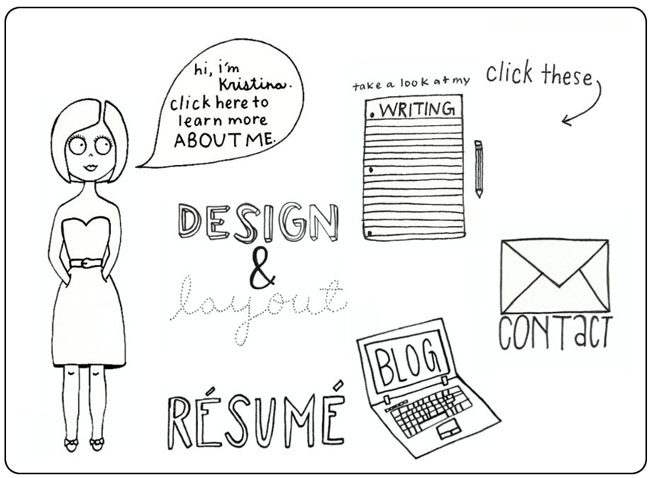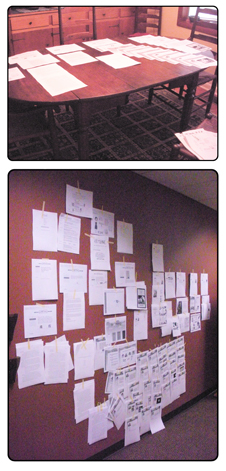Yancey, Kathleen Blake, Stephen J. McElroy, and Elizabeth Powers. “Composing, Networks, and Electronic Portfolios: Notes toward a Theory of Assessing ePortfolios.” Digital Writing Assessment and Evaluation. Eds. Heidi McKee and Danielle Nicole DeVoss. Web. 31 Jan. 2016.
Yancey et al’s article focused on considering the similarities and differences between portfolios and electronic or ePortfolios and working towards a vocabulary and theory for creating and assessing ePortfolios, primarily within the writing classroom. This was because the authors saw “the need for a new vocabulary, a new set of criteria, a new set of practices, and a new theory congruent with the affordances that eportfolios offer” (Yancey et al).
In order to do this, the authors begin by defining eportfolio: “a composition operating inside multiple networks” (Yancey et al). The authors considered previous research by Hamp-Lyons and Condon about portfolios and assessment, particularly focusing on reading practices and how these practices may differ when looking at an eportfolio; this included problems such as evaluators determining grades before finishing the first paper of a portfolio. How would then someone read an eportfolio that didn’t have a linear set of papers to look through?
With this in mind, the authors looked at Kristina’s portfolio (it was not created for a specific assignment, course, or only for employment purposes) as an example. The following image is included in the article:

“Reading Kristina’s eportfolio involved, first, making a set of choices, some of which were were…well, to not read” (Yancey et al, emphasis theirs). They determine that it is a mixed set of reading practices that they call “viewing/reading” rather than reading that is employed for print texts. Setting up criteria, the authors discuss how they evaluated the eportfolio.
- individually, we viewed/read Kristina’s eportfolio, often taking notes;
- we compared our viewings/readings both in person and online;
- we mapped our “sense” of the eportfolio;
- we conducted a pin-up of the eportfolio; and
- we synthesized our notes.
The authors used a Google docs like approach, by writing and responding to each other using different co lors of font.
lors of font.
In order to better trace the potential ways of reading the eportfolio, the authors used architectual review practice, or a pin-up as a heuristic.
Ultimately the authors came to the following conclusions:
- eportfolio is an emerging genre and doesn’t have a defining set of conventions yet.
- students are likely going to help us give definition to the genre
- The space eportfolios inhabit is a new one.
- Some of the meaning of Kristina’s eportfolio comes from the visual and is a defining feature of eportfolios.
- Development of new or reworking vocabulary around eportfolios is needed.
February 6, 2016 at 12:26 am
Two things struck me from your synopsis. First, the idea of a new approach to reading which becomes viewing/reading was interesting to me, particularly in light of opinions of people like Nicholas Carr who suggest the internet is changing the way we read, making deep reading more difficult. Though the authors’ characterization of viewing makes sense with the visual/multimedia elements present in an eportfolio, I still found myself thinking about these discussions of digital communication and reading. The second thing that struck me was the conclusion that students would likely help define the genre. This struck me because it appears then that this genre will ultimately be defined by analyzing the features students include. Thus, to understand the genre we have to first start with identifying the features before we can think about the social action they perform ala Miller and Bazerman.
LikeLike
February 7, 2016 at 6:41 pm
The thing that first caught my attention in your summary of Yancey, McElroy, & Powers was the insistence on generating a new vocabulary for this type of assessment. I agree with that. When I took Visual Rhetoric, I remember one scholar–W.J.T. Mitchell, I believe–who resisted the notion of a metalanguage for discussing the visual since to do so implies the primacy of the verbal mode over the visual. Nevertheless, I do think we need language for talking about things. If there are new skills that should be emerging from multimodal composition, we will be labeling them and talking about them. Even if there are no new skills per se, we need to collect and systematize the language that we already employ for assessment and decide if it works for eportfolios. So I am very interested in efforts to generate and test drive a new vocabulary for multimodal assessment. Incidentally, I also want to applaud you for a very helpful summary. I particularly found the numbered lists useful in capturing the key points of the article.
LikeLike